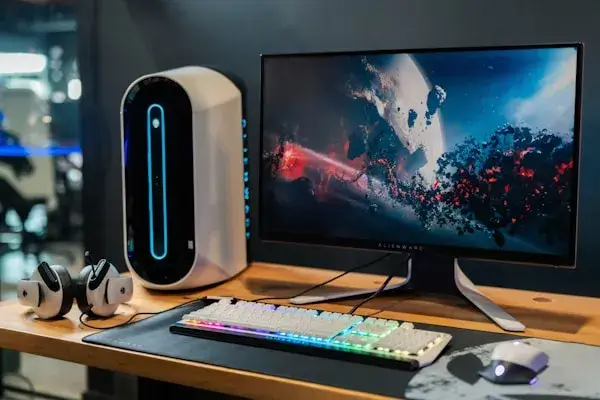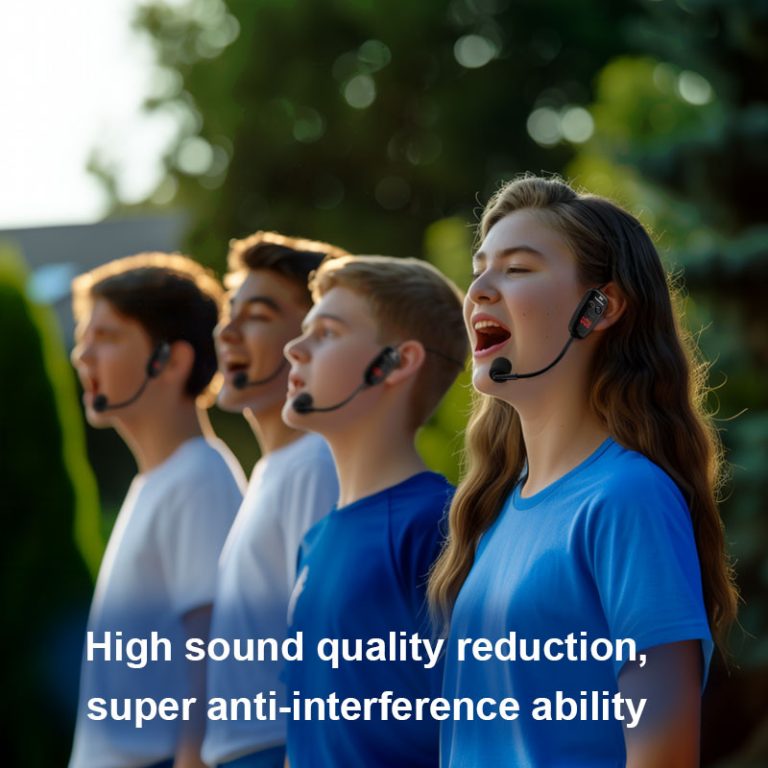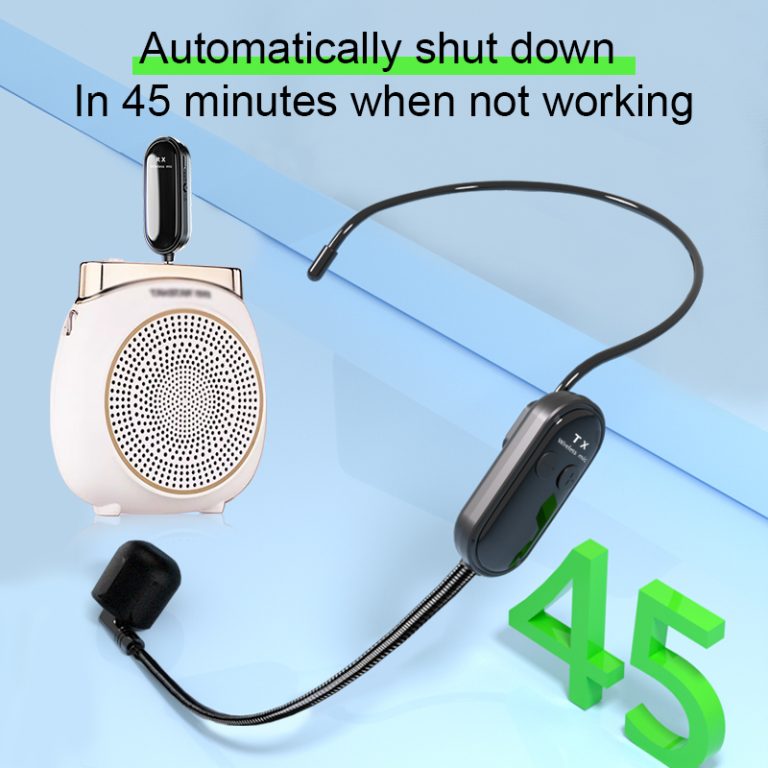Headset or USB Microphone? Choosing Your Voice’s Perfect Partner
In today’s world of remote work, virtual meetings, online gaming, content creation, and podcasting, clear audio isn’t just nice-to-have – it’s essential. But faced with countless options, a fundamental question arises: Should you get a headset or a dedicated USB microphone? Both offer significant upgrades over built-in laptop or webcam mics, but they cater to different needs and priorities. Let’s break down the pros and cons to help you find your audio soulmate.

The All-in-One Contender: The Headset
- Supreme Convenience & Portability: Headsets are the ultimate plug-and-play solution. One USB (or audio jack) connection delivers both headphones for listening and a microphone for speaking. Toss it in your bag, and you’re ready for calls anywhere. Perfect for frequent travelers or those moving between workspaces.
- Integrated Audio Experience: Everything is contained. You hear others clearly through the headphones while speaking into the boom mic positioned consistently near your mouth. This creates a focused, immersive environment, ideal for blocking out distractions during calls or gaming.
- Consistent Mic Positioning: The boom arm keeps the mic at a fixed, optimal distance from your mouth. No more worrying about drifting away from the mic during intense discussions or gaming sessions.
- Background Noise Reduction (Often): Many modern headsets, especially those designed for offices or calls, feature effective noise-canceling microphones that minimize keyboard clatter, background chatter, or fan noise for your listeners.
- Cost-Effective Solution: Generally, a good headset offers both listening and speaking capabilities at a lower combined price than buying separate high-quality headphones and a USB mic.
Potential Downsides:
- Audio Quality Ceiling: While good headsets sound decent, dedicated USB microphones typically offer superior sound fidelity, richer tones, and better detail capture, especially in the mid-range crucial for voice clarity.
- Comfort for Long Sessions: Wearing a headset for hours can cause ear fatigue, heat buildup, or pressure on your head, depending on the model and fit.
- Limited Mic Flexibility: You can’t easily adjust the mic type or position beyond the boom arm’s range. Upgrading either the mic or headphones means replacing the whole unit.
- Sound Leakage (Open-Back): Some headsets (especially open-back gaming models) can leak sound, which the mic might pick up if volume is high, creating echo.
The Audio Specialist: The USB Microphone

- Unmatched Voice Quality: This is the USB mic’s raison d’être. They capture richer, warmer, more professional, and natural-sounding audio. You’ll hear the difference in recordings, podcasts, streams, and even calls – your voice sounds fuller and more present.
- Flexibility & Control: Choose from different polar patterns (cardioid for solo speaking, omnidirectional for groups, etc.). Easily adjust positioning on a stand or boom arm for the perfect angle and distance. This is crucial for professional recording.
- Room for Growth: USB mics often have gain controls, headphone monitoring jacks (for zero-latency hearing of your own voice), and sometimes even mute buttons right on the device. Higher-end models offer features like high-pass filters.
- Comfort Freedom: You wear your own preferred headphones or earbuds. This is ideal if you already love your headphones or find headsets uncomfortable for long periods.
- Professional Aesthetic: A quality USB mic on a nice stand simply looks more professional on camera for streams, videos, or important client calls.
Potential Downsides:
- Requires Separate Headphones: You must provide your own headphones/speakers for listening. This adds to the overall cost if you don’t already own good ones.
- More Desk Real Estate & Setup: You need space for the mic, its stand, and potentially a boom arm. Setup involves positioning both the mic and managing your headphones. Less portable.
- Susceptible to Room Noise: Higher-quality mics pick up everything. Without good mic technique, positioning, and some basic acoustic treatment (like being in a quiet room), they can amplify keyboard noise, room echo (reverb), and background sounds far more than a headset’s noise-canceling boom mic.
- Generally Higher Cost for Equivalent Tier: Getting both a good USB mic and good headphones will likely cost more than a comparable quality headset.
Headset vs. USB Mic: The Decision Matrix
| Feature | Headset | USB Microphone |
|---|---|---|
| Core Strength | Convenience & Integration | Superior Audio Quality & Flexibility |
| Best For… | Frequent calls, gaming, travel, quick setup | Recording, podcasting, streaming, music, pro voiceovers |
| Portability | ★★★★★ (High) | ★★☆☆☆ (Low) |
| Sound Quality | ★★★☆☆ (Good – Very Good) | ★★★★★ (Excellent) |
| Comfort (Long) | ★★☆☆☆ (Varies – Can be fatiguing) | ★★★★☆ (High – Use your own cans) |
| Desk Space | Minimal | Significant (Mic + Stand) |
| Background Noise | Good noise rejection (usually) | Picks up more (Requires quiet space) |
| Cost (Overall) | Lower (All-in-one) | Higher (Mic + Headphones needed) |
So, Which One Should YOU Choose?
- Choose a Headset If:
- Your primary needs are video conferencing (Zoom, Teams), phone calls, or online gaming.
- You value portability, simplicity, and an all-in-one solution above all else.
- You frequently work or game from different locations.
- You’re on a tighter budget for a combined audio solution.
- Background noise at your location is a concern (choose one with good noise cancellation).
- Choose a USB Microphone If:
- You record podcasts, voiceovers, music (vocals/instruments), or stream content.
- Audio quality and a professional sound are your top priorities.
- You already own comfortable, high-quality headphones you love.
- You have a dedicated, relatively quiet workspace where you can set up the mic properly.
- You want flexibility in mic positioning and polar patterns.
- You’re willing to manage slightly more gear and setup for superior results.
The Verdict: It’s About Your Voice’s Mission
There’s no single “best” answer – only the best tool for your specific needs. For seamless communication and immersion on the go, the headset reigns supreme. For capturing your voice with clarity, depth, and professionalism, the USB microphone is the undisputed champion.
Consider how you’ll primarily use it, your environment, your comfort preferences, and your budget. If possible, listen to comparison samples online! Whether you choose the integrated convenience of a headset or the focused fidelity of a USB mic, investing in better audio will make your voice heard – clearly and powerfully – in the digital world.


